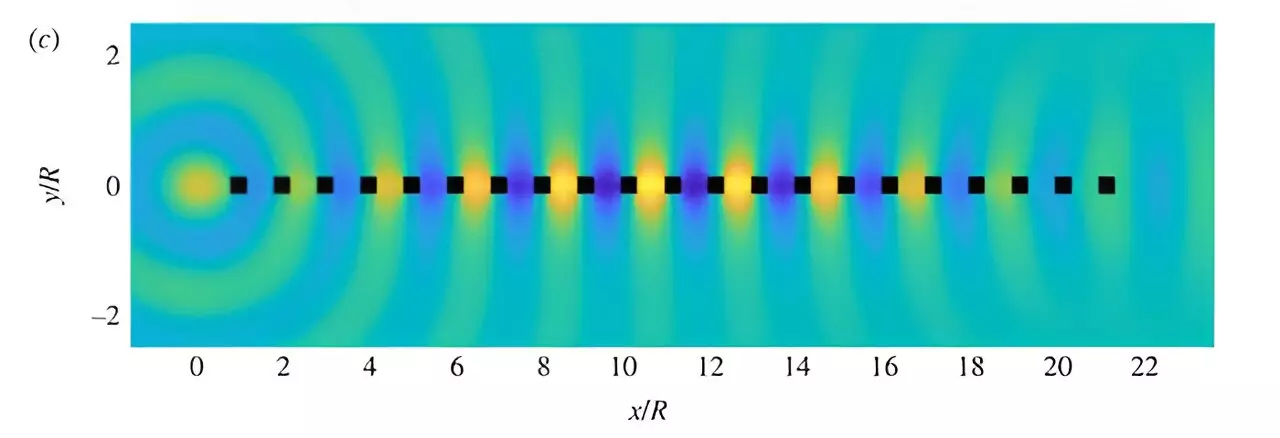Recent advancements in computational science have given rise to innovative tools that enhance our understanding of complex physical interactions. Among these developments is a groundbreaking software package called TMATSOLVER, engineered by researchers at Macquarie University. This novel software allows for highly accurate modeling of wave scattering phenomena, whether involving sound, light, or water waves, as they interact with intricate arrangements of particles. The breakthroughs associated with TMATSOLVER represent a significant stride toward the rapid and efficient design of metamaterials, which are artificially engineered materials unique in their properties, functioning by manipulating the wave interactions that occur at the nanoscale.
The Essence of TMATSOLVER
TMATSOLVER is not just another piece of software but serves as a multipole-based modeling tool that excels in simulating how waves interact with particles of varying shapes and compositions. A substantial feature of the software is its ability to simulate configurations involving hundreds of scatterers, even when these particles possess complex geometries. By employing the transition matrix, or T-matrix, comprising a comprehensive grid that encapsulates how specific objects scatter waves, TMATSOLVER takes advantage of techniques previously underutilized or overly complicated for less advanced computational efforts.
Dr. Stuart Hawkins, the lead author of the study, emphasized that while the T-matrix has been a tool in wave scattering since the 1960s, the improvements made in computing this matrix for larger and more intricately shaped particles have hurdled previous limitations in research. This leap in computational power allows researchers to model scenarios that were traditionally deemed intractable.
The development of TMATSOLVER is a prime example of collaborative academic efforts, involving contributions from mathematicians at various reputable institutions. Partnering with scholars from the University of Adelaide, the University of Manchester, Imperial College London, and several German universities, Dr. Hawkins and his team leveraged diverse expertise in mathematics to deliver results that transcend prior research capabilities.
This collaboration is instrumental for researchers like Dr. Luke Bennetts, who noted that working with TMATSOLVER circumvents the cumbersome process of numerical computations that often stifle metamaterial theory testing. The ease of employing this sophisticated tool has opened avenues for more complex testing scenarios, allowing researchers to engage with innovative geometries and design concepts that promise to push the envelope of what metamaterials can accomplish.
To illustrate the capabilities of TMATSOLVER, the research team presented four specific problem scenarios within the realm of metamaterial design. These included configurations like anisotropic particle arrays, high-contrast particles, and tunable periodic structures designed to manipulate the propagation of waves. The versatility of TMATSOLVER enables the modeling of metamaterials that exhibit properties not typically observed in natural substances — properties that pave the way for applications such as superlenses, which enhance visibility of minute objects, or invisibility cloaks that bend visible light around objects.
The potential uses of such metamaterials are vast and range from advanced optical devices capable of feats like imaging at the molecular level to innovative green energy solutions through wave absorption techniques aimed at harvesting environmental energy or mitigating noise pollution. The rapid prototyping and validation capabilities provided by TMATSOLVER herald a new era in metamaterials research, characterized by acceleration in development and application within a burgeoning market.
Professor Lucy Marshall, Executive Dean of the Faculty of Science and Engineering at Macquarie University, highlighted the software’s significance in driving forward new breakthroughs within the field. According to her, TMATSOLVER embodies a novel approach to the design and simulation of intricate metamaterials, showcasing how cutting-edge computational methods can catalyze advancements in both materials science and engineering.
The advent of TMATSOLVER exemplifies how computational sophistication can transcend traditional research boundaries, empowering scientists and engineers to explore and realize the vast potential of metamaterials. The contributions by Hawkins and his collaborators mark an important chapter not only in metamaterials research but also in the broader landscape of wave manipulation technologies, promising endless possibilities for future discoveries and applications.


Leave a Reply